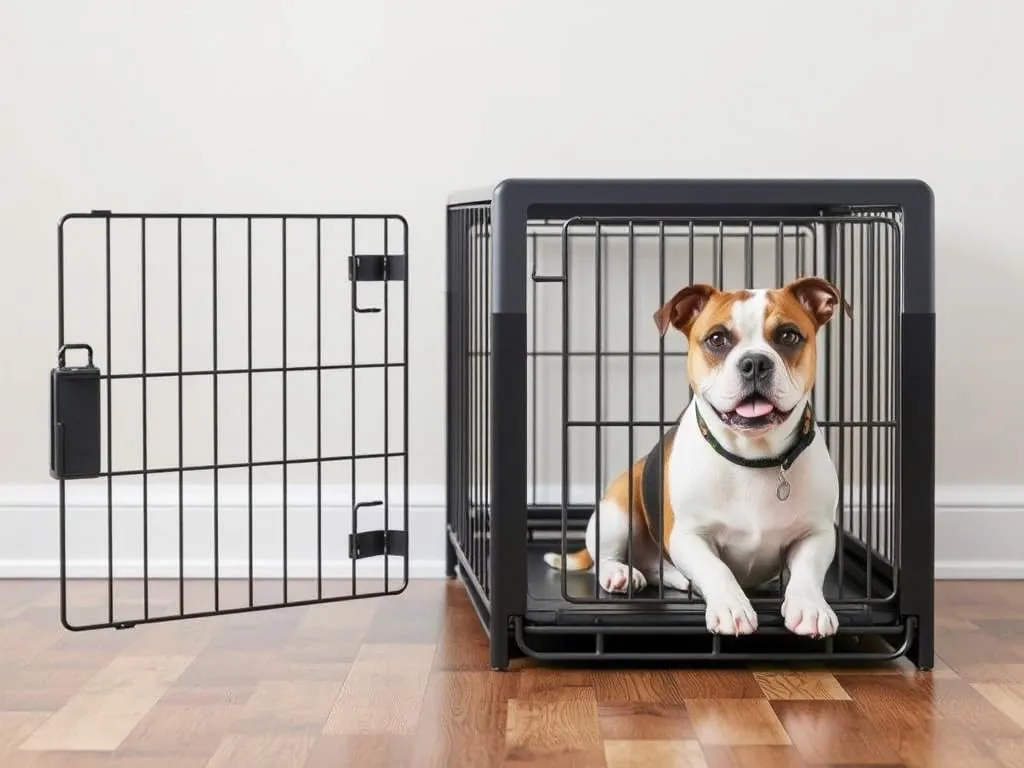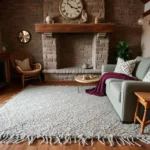
Choosing the right crate for your small dog is essential for their safety, comfort, and training. A crate serves multiple purposes—providing a secure space, assisting with house training, and even reducing anxiety. It’s important to find a crate that meets your dog’s unique needs and fits your lifestyle. This guide will explore the different types of crates available, key features to consider, and our top recommendations for the best crates for small dogs.
Understanding Dog Crates
What is a Dog Crate?
A dog crate is an enclosed space designed to provide safety and comfort. It is often used for training, travel, and as a safe haven where your dog can relax. Crates can be beneficial for establishing boundaries and can serve as a designated area for your dog to retreat when they need quiet time.
Benefits of Crating Small Dogs
Crating offers several benefits, especially for small dogs:
- Safe Space: A crate provides a secure area where your dog can feel safe.
- House Training Aid: Crates can help in house training, teaching your dog to hold their bladder until they are let outside.
- Anxiety Reduction: A cozy crate can help alleviate anxiety and reduce destructive behavior when you are not home.
Types of Crates for Small Dogs
Wire Crates
Wire crates are constructed of heavy-duty metal and are typically collapsible, making them great for at-home use and travel.
Pros:
– Excellent ventilation
– Easy to clean
– Can be used as a pen
Cons:
– Less insulation for colder climates
– Some dogs may escape if not properly secured
Best Scenarios for Use: Ideal for home training and indoor use, as well as for well-behaved dogs that do not chew.
Plastic Crates
Plastic crates are sturdy and often airline-approved, making them perfect for travel.
Pros:
– Durable and secure
– Provides a den-like environment
– Easier to transport
Cons:
– Limited ventilation compared to wire crates
– Less visibility for the dog
Best Scenarios for Use: Great for travel and for dogs that prefer a more enclosed space.
Soft-Sided Crates
These crates are made from fabric and mesh, making them lightweight and easy to transport.
Pros:
– Lightweight and portable
– Easy to set up and store
– Comfortable for dogs
Cons:
– Less secure and durable
– Not suitable for strong chewers
Best Scenarios for Use: Perfect for travel, camping, and indoor use for calm dogs.
Travel Crates
Travel crates are specifically designed for transportation, whether by car or airplane.
Pros:
– Often airline-approved
– Designed for safety during travel
– Portable and easy to set up
Cons:
– May not be as comfortable for long periods
– Can be more expensive
Best Scenarios for Use: Ideal for frequent travelers or those who need a crate for specific journeys.
Key Features to Consider When Choosing a Crate
Size and Dimensions
Selecting the right size is crucial. A crate should be spacious enough for your dog to stand, turn around, and lie down comfortably.
Tips for Measuring Your Dog:
– Measure your dog’s height from the ground to the top of their head while standing.
– Measure the length from the tip of their nose to the base of their tail.
– Add a few inches to each measurement for comfort.
Material and Durability
The material of the crate affects its durability and safety. Wire, plastic, and fabric each offer different levels of sturdiness.
- Wire: Strong and long-lasting but can rust if not treated properly.
- Plastic: Provides good insulation but can be chewed through by determined dogs.
- Fabric: Lightweight but may not withstand heavy wear and tear.
Ventilation and Visibility
Proper airflow is essential for your dog’s comfort. Crates with good ventilation ensure that your dog remains cool and comfortable.
Benefits of Visibility: Dogs that can see their surroundings may feel less anxious, helping to reduce stress.
Portability and Storage
Consider how easy the crate is to transport. Look for features such as being foldable or lightweight, especially if you plan to travel with your dog.
Ease of Cleaning
Choose materials that are easy to clean. Removable trays or washable covers can help maintain hygiene and keep the crate smelling fresh.
Top Recommendations for the Best Crates for Small Dogs
Best Overall Crate
MidWest Homes for Pets iCrate Folding Metal Dog Crate
This wire crate is a fantastic option for small dogs. It features a double-door design, allowing for easy access and placement in various spaces. Its divider panel allows for adjustable sizing as your dog grows.
- Key Features: Durable metal construction, removable plastic tray for easy cleaning, foldable for storage.
- Price Range: $50 – $80
- Where to Buy: Available on Amazon and pet supply stores.
Best Budget Crate
AmazonBasics Folding Metal Dog Crate
For those on a budget, this crate offers excellent value without sacrificing quality. It is easy to set up and offers a sturdy design.
- Key Features: Single door, removable plastic tray, collapsible design.
- Price Range: $30 – $50
- Where to Buy: Amazon.
Best High-End Crate
PetFusion Ultimate Dog Crate
For a premium option, the PetFusion Ultimate Dog Crate combines style with functionality. Made from high-quality materials, this crate is designed for both comfort and aesthetics.
- Key Features: Solid wood construction, modern design, integrated storage.
- Price Range: $200 – $300
- Where to Buy: PetFusion website and select pet stores.
Best Travel Crate
Petmate Sky Kennel
This plastic travel crate is airline-approved and ideal for taking your small dog on trips. Its design provides safety and security during travel.
- Key Features: Durable construction, ventilation holes, secure locking system.
- Price Range: $75 – $150
- Where to Buy: Available at major pet retailers.
Best Soft-Sided Crate
SportPet Designs Travel Pet Crate
This soft-sided crate is lightweight, portable, and perfect for travel. Its design allows for easy setup and storage.
- Key Features: Water-resistant fabric, multiple entrances, collapsible.
- Price Range: $50 – $80
- Where to Buy: Amazon and pet specialty stores.
Crate Training Tips for Small Dogs
Introduction to Crate Training
Crate training is an effective method for house training and teaching your dog to feel secure in their space. Timing, consistency, and positive reinforcement are key to successful training.
Steps for Successful Crate Training
- Introduce the Crate: Allow your dog to explore the crate with the door open. Use treats to encourage them to enter.
- Make it Comfortable: Place a soft blanket and a toy inside to create a cozy environment.
- Close the Door: Start closing the door for short periods while you are nearby, gradually increasing the time.
- Positive Reinforcement: Reward your dog with treats and praise when they enter the crate willingly.
- Establish a Routine: Incorporate crate time into your daily schedule to help your dog adjust.
Common Mistakes to Avoid
- Using the Crate as Punishment: This can create negative associations with the crate. Always make it a positive space.
- Leaving Your Dog in the Crate Too Long: Small dogs have small bladders and should not be crated for extended periods.
- Skipping the Introduction Phase: Take the time to let your dog become comfortable with the crate.
Frequently Asked Questions (FAQs)
-
What size crate do I need for my small dog?
The crate should allow space for your dog to stand, turn around, and lie down comfortably. Measure your dog and choose accordingly. -
How long can a small dog stay in a crate?
Ideally, small dogs should not be crated for more than 4-6 hours during the day. Puppies need more frequent breaks. -
Can I use a crate for multiple small dogs?
Yes, but ensure each dog has enough space and considers their individual needs. Using separate crates is often best for reducing stress.
Conclusion
Choosing the best crates for small dogs can make a significant difference in their comfort and safety. By understanding the various types of crates, essential features to consider, and utilizing proper crate training techniques, you can create a positive experience for your furry friend. Remember to assess your dog’s unique needs and lifestyle when selecting a crate to ensure the best fit. Share your thoughts and experiences in the comments!









